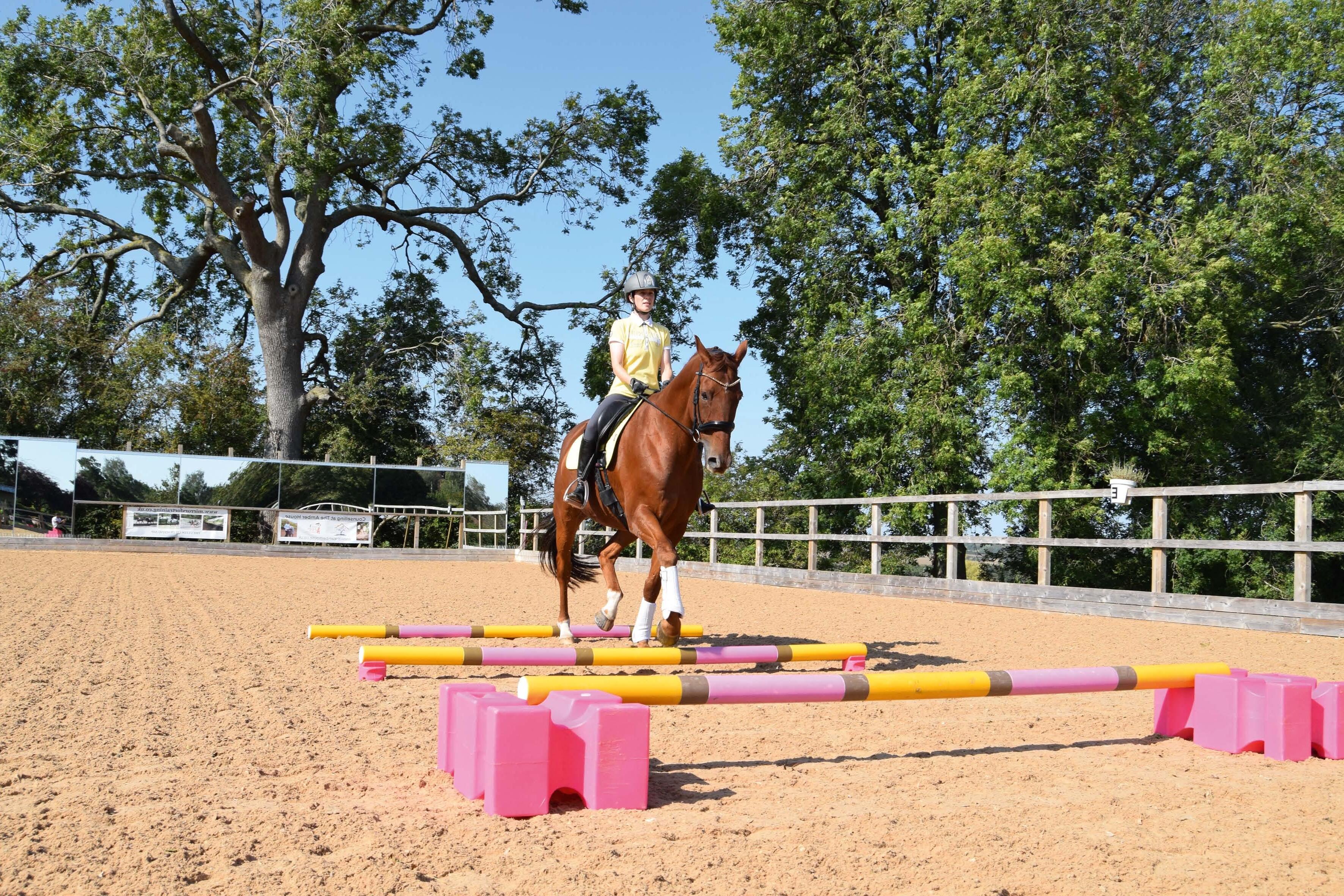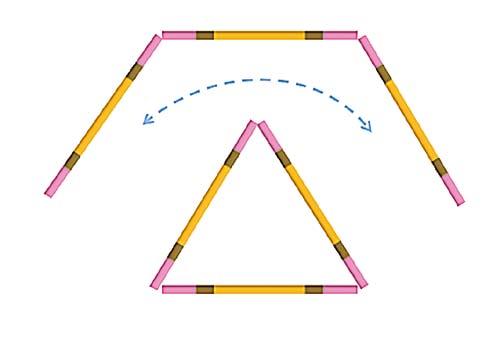by Saidee Samuelson Equestrian Pole Club

“
As well as being a serious training aid, pole work can be really fun and engaging for both the horse and rider. Setting up exciting layouts, picking your way through together, exploring new lines, challenging yourself and your horse can be a great way to bond and further your connection as you simultaneously condition their mind and body.
FUN AND CHALLENGING
It is one of those exercises where it can be fun and challenging but still be beneficial for your horse as it essentially encourages the horse to work in a correct posture with very limited skill required from the rider or handler. So, let’s look at why this happens and create a mental image of the picture your horse should make as it works over poles.
THE BACK
To physically lift its limbs over the poles the horse must engage the core muscles, lower the head and lift the back. As long as the distances are appropriate and the horse is not overreacting or underreacting due to a physical limitation, then it should begin to work correctly (for its appropriate level of training) when using poles.
So, why do poles achieve these results?
POLE
ExErcisEs
Training With Poles, the concept of using these to help train your horse sounded like a great idea.
You have either purchased poles or found a good supply and are ready to include them in your training program. But what’s next?
You have tried a couple of the exercises from the last issue, now you are ready for something new and would like to address specific aspects in your horse’s training.
Saidee Samuelson shares ideas with readers for a couple of simple starting exercises. Saidee is from the UK and is the creator of the Equestrian Pole Club group on Facebook.
TrY THESE ExErCISES WHILE oFF THE HorSE.
1) Bend over so your torso is at 90° to your legs, now dip your back towards the ground ,
2) Try to lift your leg up towards your stomach. It’s pretty impossible isn’t it?
3) Now in the same position arch your back upwards
4) Try to lift your legs up towards your stomach. Feel how easy it is and how difference to when you had your back hollowed. The same is true for your horses. For them to physically step over poles they must lift their back and recruit the core muscles.
VISIoN
Due to the way a horse’s eye is positioned it needs to lower its head when working over poles to be able to accurately assess distances and foot placement. This lowering of the head also helps the horse raise its back and engage the core muscles.
What
should your horse look like When doing pole Work?
Observing from the side:
1) The head lowers
2) The nose is on or slightly in front of the vertical
3) The base of the neck lifts
4) The base of the wither lifts
5) The hind end scoops up under the horse – you may see the hind legs snap up under the horse too
6) The area behind the saddle lifts and appears mobile
7) The lumbosacral region may flatten.,

Essentially this posture we see in the diagram is upheld by the core muscles – to train a horse that can support the weight of its rider and move fluidly in a correct posture relies on the integrity and strength of the core muscles. When we work over poles the recruitment of the core muscles is essential for the horse to be able to lift the limbs, but in turn this generates the correct posture we hope to see when working over poles.
WorKING oVEr PoLES IN HAND
CrEATE THE moDEL PoSTUrE
Your horse should be able to lower its head, and the rider or handler should have soft, forgiving hands. Not only does the horse need time to prepare and assess the question (poles) in front of it but the mobility of the head is essential for balance and freedom of movement within the spine. Studies have shown how a variety of different fixed training aids, such as side-reins, limit the range of motion the horse has within its spine, and these limitations can be simulated by a fixed or unyielding hand.
STArTING oUT
Just like starting out with most new things, we tend to go in walk first. Walk pole exercises are amazing, there is no moment of suspension in a true four beat walk, so the ability of the horse to physically move is reliant on the muscles contracting and the joints moving freely. This means walk really helps our horses to build strength. Walk is also the pace at which there is the highest degree of rotation in the horse’s pelvis and back as well as the most amount of lateral flection per stride.
PoLE WorK For STrAIGHTNESS
This exercise is called the T-bar arrowhead and should be ridden in trot only. The central line helps to encourage the horse to stay straight while the side wings give the horse a simpler more familiar line to work over.

BENDING AND STrAIGHTNESS ComBINED
When your horse walks over a single pole or single raised pole, we notice that it very briefly slows to ensure its leg can actually go up over the pole. This is really testing its balance and core muscles, as well as all the muscles involved in lifting the limb, while working not only core, Thoracic sling and pelvic lumbar sacral region.
A series of raised poles increases joint flection and is an easy way to start to achieve the correct posture.
HoW Do YoU KNoW WHAT ExErCISE To CHooSE?
Moving on from single and raised walk poles the selection of exercises very much depends on what you are trying to achieve. Most pole work exercises will help improve posture, core strength, balance and topline but in terms of training we can select exercises to help us achieve specific outcomes.
This exercise is a great example of utilising the space around an exercise, moving between the poles and using them to help you generate the bend in your horse. The arrows give an indication on lines that you can take, the curved line through the top is tricky but very ridable. An advanced horse and rider could canter this line.”




December/January 2020/21 - Page 19







